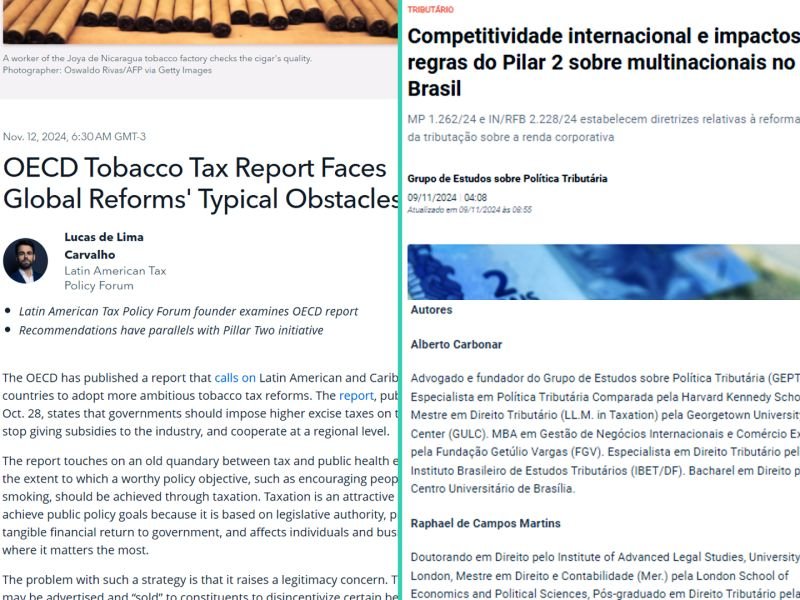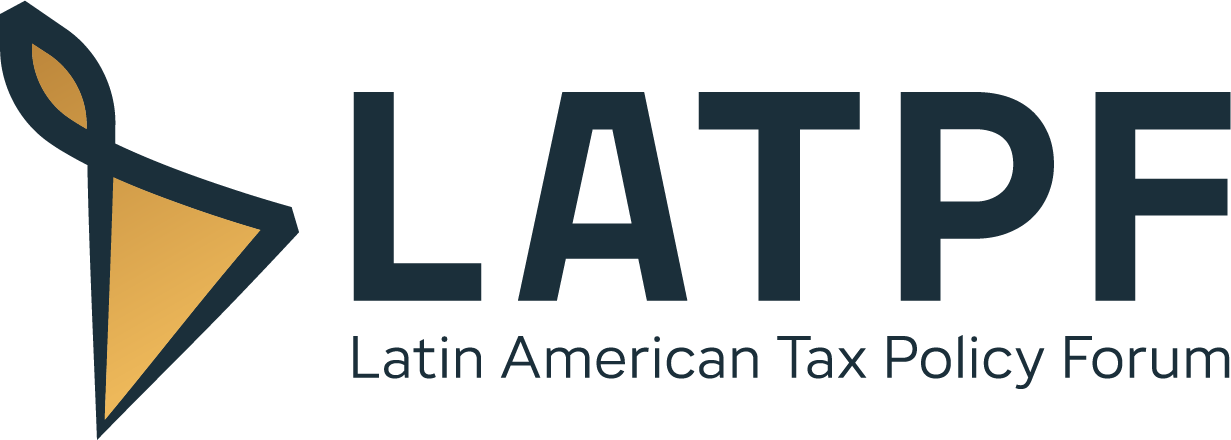🌎 Two interesting articles about tax policy issues affecting LatAm have been published by Bloomberg Tax and JOTA this week. Both are freely available and are recommended to readers by the Latin American Tax Policy Forum (LATPF):
🚬 In “OECD Tobacco Tax Report Faces Global Reforms’ Typical Obstacles”, Lucas de Lima Carvalho provides commentary on the recent OECD – OCDE report about the taxation of tobacco in the LAC region. He argues that there is a latent “legitimacy concern” in the increase of taxes on tobacco if they are used for budgetary purposes not connected to the reduction of tobacco consumption. He also argues that digitalization of LAC tax administrations is “inconsistent at best”, which raises the issue of whether increased monitoring and enforcement of tobacco taxes – a recurring theme of the report – is a mission that is achievable by local governments at a reasonable cost.
The author also draws a parallel between the proposals made by the OECD for tobacco taxation and its apparent success with Pillar 2, particularly when it comes to ensuring that “‘weak’ control policies in one country [don’t] create a hurdle for effective tobacco tax policies in other countries”. His article is available here: https://bit.ly/3O438ta
🔎 For readers interested in the assessment of the digital maturity of tax administrations and how its metrics can be improved by testing for transparency, accountability and respect to taxpayer’s rights, we recommend a thought-provoking article written by Christina Dimitropoulou for Tax Notes titled “Measuring Tax Administration Performance: The Divisive Role of Digital Maturity Models”. Available here: https://bit.ly/4hMEr1Q
💵 In “Competitividade internacional e impactos das regras do Pilar 2 sobre multinacionais no Brasil” (“International competition and impacts of the Pillar 2 rules on multinationals in Brazil”), Alberto Carbonar and Raphael de Campos Martins analyze the impact of the new Brazilian QDMTT on MNEs operating in the country. The authors highlight the amortization of goodwill for tax purposes and the judicial cases about the imposition of income taxes on State tax incentives as factors that can reduce the ETR of those MNEs and either raise a QDMTT risk in Brazil or an IIR/UTPR risk elsewhere.
Their article is featured in the GEPT – Grupo de Estudos sobre Política Tributária column of JOTA and is available in Portuguese here: https://bit.ly/3YIFxDq
🔎 Another LatAm country that adopted a Domestic Minimum Tax as a defensive measure against Pillar 2 is Colombia. The key difference between the Colombian DMT and the Brazilian QDMTT (pending legislative approval) is the scope: the Colombian DMT is imposed on taxpayers in general, whether or not they are part of an MNE that meets the revenue threshold of EUR 750 million. For more on the topic, we recommend Manuela Orozco’s article titled “Complejidades del impuesto mínimo en Colombia” and available on Asuntos Legales in Spanish: https://bit.ly/4hCMLkO


